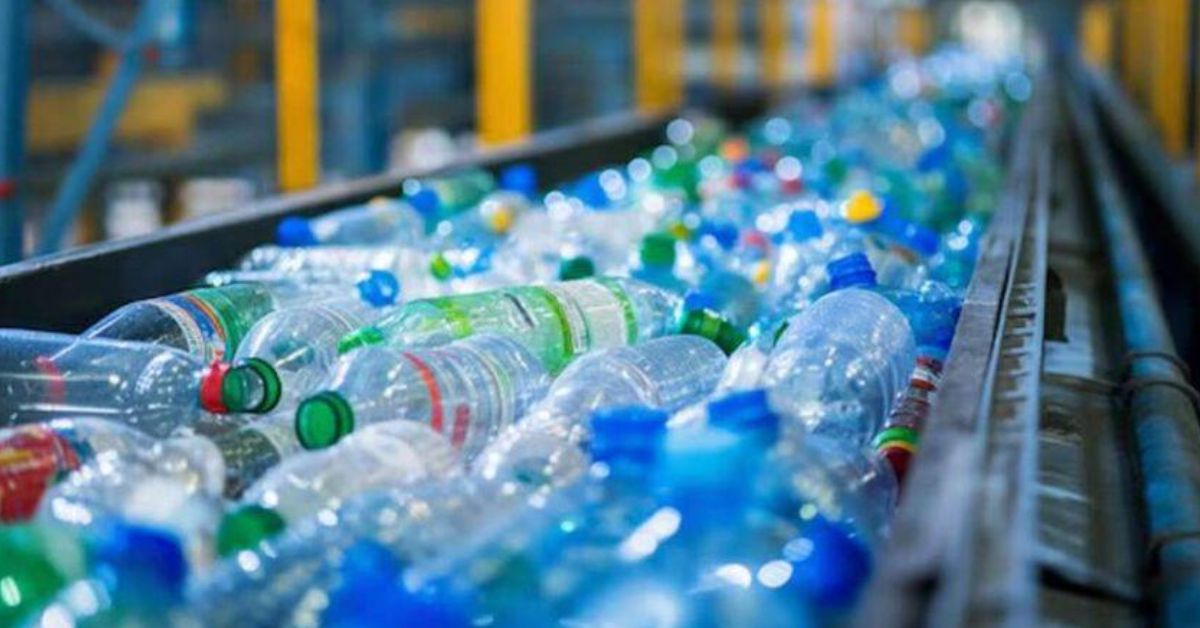Business & Finance
Plastic Recycling in India: Trends, Challenges, and Innovations

Plastic use is deeply woven into modern life, from packaging and consumer goods to textiles and automotive parts. Yet as consumption grows, so do mountains of plastic waste. India alone produces approximately 3.4 million tonnes of plastic waste every year, with less than one third of that ending up in recycling facilities – everything else clogs landfills and rivers. Emerging markets share similar stresses: surging urbanization, limited municipal and industrial waste infrastructure, and a critical need for sustainable development. This blog looks at trends, challenges and innovation in plastic recycling today, with particular emphasis on India and emerging economies. It also shines a light on trail-blazing organizations (such as Banyan Nation) that are facilitating a brighter, plastic recycling future.
Rising Plastic Consumption and the Need for Recycling
Increasing use of plastic in India and other emerging economies is fueled by increasing populations and customer demand. The result of this growth is that more than 25,000 tonnes of plastic packaging waste is abandoned every single day in India—40% of this isn’t officially collected. To deal with this increasing waste, recycling facilities need to grow rapidly.
There’s good news. India’s market for recycled plastics at 10 million tonnes in 2023 is set to double by 2032. Government policies like the Plastics Pact and tougher EPR regulations now mandate brands to utilize as much as 30% recycled plastic in packaging by 2025. These developments reflect a clear shift toward plastic circularity as both a necessity and an opportunity.
Challenges in Plastic Recycling
Despite growing interest, several hurdles slow the progress of plastic recycling in India. Infrastructure and collection systems remain weak, especially beyond major cities. Much of the recycling depends on an under-supported informal sector—home to 1.5 to 4 million waste pickers—who work without recognition or stable income.
Recycling is also complicated by material types. Multi-layer packaging, films, and contaminated plastics are difficult to recycle with standard technologies, and hence, it becomes challenging to make good-quality recycled resins. Economically, recycling competes with cheaper virgin plastic, especially when oil prices are low.
This deters investment and causes ambiguity. And as brands are making commitments to sustainability, relating those ambitions to on-the-ground realities such as procuring good-quality recycled input remains an uphill task.
Innovations Driving a Circular Plastic Economy
To tackle these challenges, there are rising plastic recycling innovations that make processes more effective and outcomes more valuable. These include several main categories:
Advanced Mechanical Recycling:
Enhanced sorting, AI, and better washing systems now enable recyclers to make almost-virgin-quality resins. Banyan Nation’s Clean India Plastic™ is such an example—manufacturing high-purity, odorless recycled polymers suitable for consumer goods.
Chemical recycling:
For those plastics that can’t be processed mechanically, technologies such as pyrolysis and depolymerization decompose waste to produce recoverable chemicals or oils. Although still in scale-up stages, these technologies provide means to handle multi-layer as well as dirty plastics.
Design for Recyclability:
Companies are streamlining packaging using units of single materials and boosting recycled content to make recycling at end of life simpler. Others are piloting biodegradable materials.
Digital Traceability:
Data platforms now map plastic flows from collection to reuse.10,000+ informal collectors in 20 states have been tracked by Banyan Nation, making it possible to ensure EPR compliance and supply chain clarity.
Integrating the Informal Sector and Data Intelligence
The single biggest plastic recycling innovation may be less about machines and more about humans. India’s recycling chain depends largely on these informal waste workers, who range from collectors, aggregators and scrap dealers, who collect tonnes of plastic that formal systems overlook. Far from replacing them, efforts now focus on integrating and elevating these workers.
They involve formalization via fair trade schemes where brands and NGOs or social enterprises collaborate to provide stable, equitable prices.
Platforms reduce intermediaries, increasing earnings and supply reliability. Others provide ID cards, protective gear, and social entitlements through cooperatives or public-private initiatives, conferring dignity and stability to these workers.
Data intelligence platforms fortify these initiatives. Others, such as Banyan Nation’s mapping system, monitor flows of waste and trace participants, providing end-to-end traceability. This avoids leakages, maximizes resource allocation, and enables brands to measure sustainability impact quantitatively—all in building an open, inclusive recycling ecosystem.
The Role of Pioneers and Stakeholders in Plastic Circularity
To establish a circular plastic economy, there needs to be coordination among different parties: plastic converters, brands, raw materials providers, investors, and waste collection sector all have interconnected roles to play:
- Manufacturers feel compelled to lower plastic use and achieve recycling content targets. Some of them redesign packaging and invest in EPR initiatives. Collaborating with innovators such as Banyan Nation through traceable resins and Clean India Plastic™—enables them to achieve targets credibly and effectively.
- Plastic Converters and Suppliers have an important role to play in infusing recycled polymers in items. Stable, high-quality resins such as Banyan’s rPE and rPP make it possible without compromising performance. Even conventional suppliers are adopting recycling as they realize the move toward mixed materials.
- Investors are funding scalable recycling solutions ranging from plants to digital platforms, viewing both impact as well as profitability. Investment in firms like Banyan Nation indicates optimism about models marrying growth and sustainability.
- The Informal Sector is still crucial. Formalizing waste collectors through decent wages, training, and digital platforms benefits recycling results and livelihoods. Technologies such as Banyan’s data intelligence system facilitate integrating those workers with traceability and adherence to regulations.
Endnote:
India’s plastic recycling stands at the cusp of change. Increasingly large volumes of waste and rising complexity of materials pose real challenges—and momentum is shifting. With increasing regulation, corporate reporting, and recycling and tracking innovation, grounds are being set for circularity to take hold.
No single player or approach can solve this alone.System change needs to be done in partnership conjoining technology with grass roots, policy with private enterprise. Banyan Nation illustrates this partner model by its integration of Clean India Plastic™ resins and digital platforms that institute and empower unorganized waste regimes.
The way forward is cooperative and inclusive. As increasing numbers of stakeholders adopt this vision, plastic can transition from cause of environmental degradation to a circular resource—driving economic dignity and social equity as much as sustainability in India and beyond.
